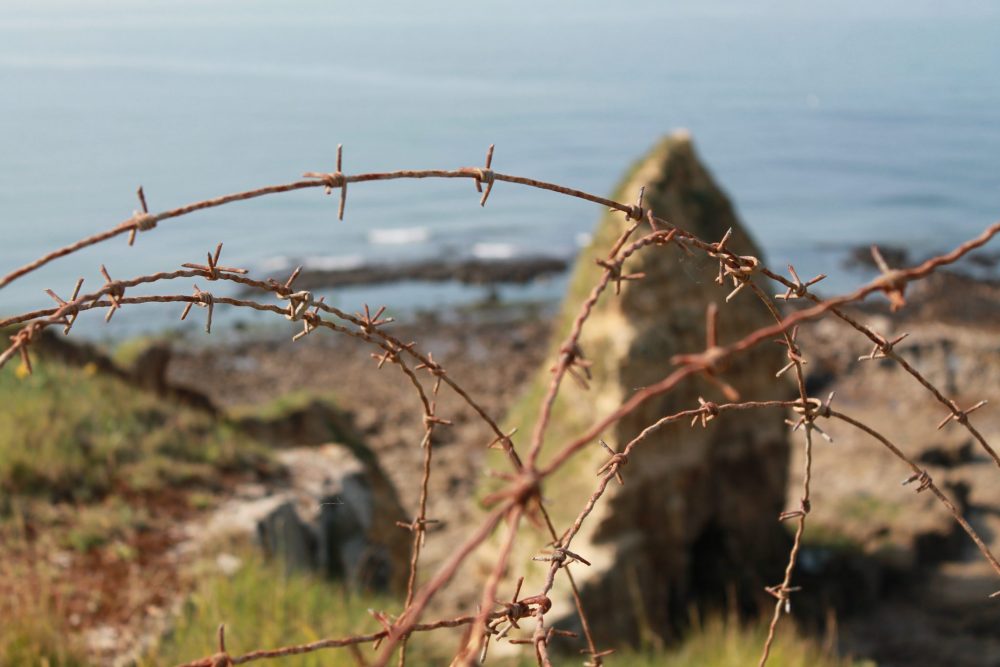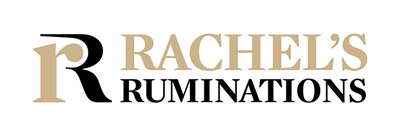The Liberation Route Europe: WWII battlefields and more
If World War II interests you, the Liberation Route Europe is something you could easily build a European vacation around. It traces how the Allies advanced through Europe to retake it from the Germans. Click on any of the 10 countries listed on the Liberation Route’s website and you’ll find dozens of sites marked. The locations range from well-known, often-visited WWII battlefields like the Normandy beaches where D-day happened, to lonely informational signs commemorating forgotten events.

Disclosure: This article contains affiliate links. If you click on one and make a purchase, I will receive a small commission. This will not affect your price.
Having done a small piece of the route myself, I realize that World War II was far more complicated than what we learned in school. The Liberation Route Europe is enormous and multi-faceted and far-reaching. It is also growing as more locations are added.
What is the Liberation Route Europe?
Because of the complex nature of the campaign to defeat Germany, the Liberation Route Europe isn’t actually a route. That would imply that the liberation of Europe was carried out by a single army moving along one path. In fact, it involved multiple battles, multiple routes, and multiple armies among the Allies.

The Liberation Route Europe “starts” in the south of the UK and traces the advance of the Allies through France, Belgium, and the Netherlands into Germany, but also includes Danzig (Gdansk) in Poland, as well as locations in Italy.
All over Europe – especially in France, Belgium, the Netherlands and Germany – are sites where important events took place. Many memorials, museums, cemeteries and reconstructions commemorate these events. To travel the Liberation Route Europe – or at least parts of it – is a way to learn about and appreciate them more.
I think it’s safe to say that you could not travel all of it. Or rather, not all of it in one trip, though I’d certainly love to try. I can imagine buying a campervan and spending many months exploring the route once I’m retired, but you couldn’t do it in a two-week vacation.
The Liberation Route in the UK
The Imperial War Museum is a good place to start, though the museum is actually made up of a number of locations, three of which are in London. The Imperial War Museum London is not only about World War II. It was founded during World War I and addresses issues of war and confict in general. For the purposes of looking at the Liberation Route, check out the permanent exhibit called “Turning Points: 1934-1945” and their Holocaust exhibition.
Imperial War Museum: Lambeth Road, London. Open Wednesday-Sunday 10:00-18:00. Admission: free.
The Churchill War Rooms, part of the Imperial War Museum, is also in London. It is the underground structure where the British government ran the UK’s war effort.
The Churchill War rooms: Clive Steps, King Charles Street, London. Open Wednesday-Sunday 9:30-18:00. Admission: adults £27.50, children 5-15 £13.75.
Try this walking tour of the Churchill War rooms and WWII history in Westminster.
The third part of the museum that is in London is the HMS Belfast, a Royal Navy ship that took part in the D-Day invasion.
HMS Belfast: The Queen’s Walk, London. Open daily 10:00-18:00. Admission: adults £25, children 5-15 £12.50.
On the English Channel in the south of England is the city of Portsmouth, home to The D-Day Story, a museum telling, as the name implies, the whole story of the D-Day invasion.
The D-Day Story: Clarence Esplanade, Southsea, Hampshire, Portsmouth. Open daily April-September 10:00-17:30 and October-March 10:00-17:00. Admission: adults £13.50, children 5-17 £6.75.

Highlights of the French Liberation Route
If you’re traveling in France, clearly Normandy is the main attraction. We traveled there with two young teenagers. They learned a bit about World War II, particularly the D-Day landings, but also got some free time on the beach.
Unfortunately, on that trip we didn’t visit the Mémorial de Caen Museum. This would be a good place to start, since it gives an overview of the entire war, including its origins in World War I and extending to the development of nuclear weapons and the bombs dropped on Japan.
Mémorial de Caen Museum: Esplanade Général Eisenhower, Caen. Hours vary, open daily 9:00-19:00 during the summer months, closing an hour earlier in the winter. Admission: adults €19.80, children 10-18 €17.50.

We did visit Arromanche, where the remains of the artificial harbor are still visible from the beach. The D-Day Museum Arromanche explains how the British built the artificial port. As museums go, it wasn’t the most impressive.
D-Day Museum Arromanche: Place du 6 Juin, Arromanches. Hours vary depending on time of year. See website. Admission: Adults €8.20, children and students €6.
On the other hand, the Arromanche 360 – a circular film – is great for getting an impression of what it must have been like to be a soldier in the chaos of the landing.
Arromanche 360: Rue du Calvaire, Arromanches-les-Bains. Open summers 9:30-18:00; 10:00-17:00 in the winter. Admission: adults €7, children 10-18 €6.

There are many more museums associated with WWII battlefields in Normandy, some affiliated with the Liberation Route, some not. Here are a few of them:
- The Juno Beach Center at Juno Beach focuses on the role of Canadian volunteers in the war.
- The Pegasus Memorial is a museum dedicated to the men of the 6th British Airborne Division.
- The Utah Beach Museum focuses on the American landing at Utah Beach.
- The Museum of the Merville Battery (German bunkers)
- The Radar Museum 1944 in Douvres
- The Overlord Museum on Omaha Beach
If you’re not driving yourself, try any of these guided tours to D-Day beaches in Normandy.
Passing through Belgium
While Belgium has fewer stops on the route than France, the Netherlands or Germany, one of the most important battles of the Liberation Route was the Battle of the Bulge. This was a German counteroffensive in the winter of 1944-45 which ultimately failed. The Bastogne War Museum is in Bastogne, Belgium, and offers interactive content to help visitors imagine what it was like to be in Belgium when the Battle of the Bulge was taking place.
Bastogne War Museum: Colline du Mardasson 5, Bastogne. Open July and August daily 9:30-19:00, September-June daily 9:30-18:00. In November-mid-March it is closed on Mondays and it is closed entirely for the month of January. Admission: Adults €16, children 6-18 €8.50.

The Liberation Route in Germany
Hurtgenwald (Huertgen Forest) in Germany is a WWII battlefield site where the longest battle on German soil of the whole war took place. Several war cemeteries are here, and a small museum in Hurtegenwald-Vossenack (run by volunteers and only open on Sundays) explains the battle itself. There, you can spot the remains of trenches in the woods. It’s also a beautiful forest and near other popular tourist destinations in Germany like Cologne.
Museum Huertgenwald: Pfarrer-Dickmann-Straße 21 – 23, Hürtgenwald-Vossenack. Open only on Sundays, March-November 10:00-17:00. Admission: Adults €5, children €3.
Berlin is, of course, the end point of the Liberation Route Europe. Some of the sites from the Liberation Route are in my article World War II and Cold War sites in Berlin. The Reichstag building is a “remembrance site” on the route, as is the Memorial for the Murdered Jews of Europe.
Here are some WWII-related guided tours in Berlin.
The German-Russian Museum Berlin-Karlshorst is on the site where Germany surrendered unconditionally in May, 1945. You could say that this is the historical end of the Liberation Route Europe. It’s called the German-Russian Museum because it’s a joint venture of the two governments and focuses primarily on the war on the Eastern Front between Germany and the Soviet Union.
German-Russian Museum Berlin-Karlshorst: Zwieseler Straße 4, Berlin. Open Tuesday-Sunday 10:00-18:00. Closed on Mondays. Admission: free.
On the other hand, you could see the Allied Museum as the true end of the trail. It tells the story of Berlin from 1945, when it was split among the conquering Allies, to 1994, when the Allies withdrew. It includes a British plane used in the Berlin Airlift and other artifacts connected with the Cold War period when Berlin was divided.
Allied Museum: Clayallee 135, Berlin. Check website for hours and prices.

While it’s not on the route, if you’re interested in the period after the war, you also might want to pay a visit to Nuremberg, where the Nuremberg Documentation Center chronicles Hitler’s grand plans but also how some of the Nazi leaders were brought to justice.
The Dutch Liberation
Quite a few of the Liberation Route sites are in the Netherlands, the most famous of which have to do with Operation Market Garden. This was a failed effort by Allied airborne and ground forces to capture a series of bridges. They needed these bridges to allow ground troops to move quickly and surround the whole industrial Ruhr area in Germany. The Airborne Museum at Hartenstein in Oosterbeek tells all about it and commemorates the soldiers who died in the process. If you’ve ever seen the film A Bridge Too Far, you’ll know that the film recreates the final battle in Operation Market Garden.
Airborne Museum at Hartenstein: Utrechtseweg 232, Oosterbeek. Open daily 10:00-16:30. Admission: Adults €15, children 8-17 €10.
The Bridge to Liberation Experience happens every September in Arnhem. The events of the Battle of Arnhem are remembered and recreated in music, dance and spectacle. Other related events take place before and after, including a mass parachute jump to commemorate the paratroopers’ contribution to the battle.

The Freedom Museum in Groesbeek, also on the official Liberation Route list, is near the border with Germany. It looks at the whole Rhineland Offensive, including Operation Market Garden.
Freedom Museum: Wylerbaan 4, Groesbeek. Open Monday-Saturday 10:00-17:00 and Sundays and holidays 12:00-17:00. Admission: Adults €15, children 7-12 €7.
While it isn’t officially on the Liberation Route, the Dutch Resistance Museum in Amsterdam is also worth a visit.
Camp Westerbork, quite near where I live, is where pretty much all of the Jews of the Netherlands were held while they waited to board the cattle cars that would take them to their deaths in concentration camps like Auschwitz. Today a small but effective museum gives an impression of life in the camp. You can walk the grounds to see what is left of the buildings and visit a powerful memorial to the Jews who died.
Camp Westerbork: Oosthalen 8, Hooghalen. Open Monday-Friday 10:00-17:00 and Saturday and Sunday 10:30-17:00. Admission: Adults €9.95, children 8-18 €4.95.
Why you should travel the Liberation Route Europe
If you look on the Liberation Route Europe website, you’ll see that there are dozens of sites to visit if you travel the route. They range from large, comprehensive museums down to simple markers, and everything in between.
It seems to me that any trip in France, Belgium, the Netherlands or Germany should include at least a few elements from the route. World War II was so huge, so all-encompassing and so world-changing that it is worthwhile, if only briefly, to stop from time to time and acknowledge that it happened. When you see the beautiful coastline in Normandy, the rolling green hills of the Ardennes in Belgium, or the flat, wide farmland of the Netherlands, it’s hard to imagine the terrible events that happened here.
That makes it all the more important to stop and remember.
Have you ever visited any of the stops on the Liberation Route Europe? Leave a comment below!
If you’re looking for accommodations, please use the map below. I’ve set it to Arromanche in Normandy, but you can search any location you want.

My travel recommendations
Planning travel
- Skyscanner is where I always start my flight searches.
- Booking.com is the company I use most for finding accommodations. If you prefer, Expedia offers more or less the same.
- Discover Cars offers an easy way to compare prices from all of the major car-rental companies in one place.
- Use Viator or GetYourGuide to find walking tours, day tours, airport pickups, city cards, tickets and whatever else you need at your destination.
- Bookmundi is great when you’re looking for a longer tour of a few days to a few weeks, private or with a group, pretty much anywhere in the world. Lots of different tour companies list their tours here, so you can comparison shop.
- GetTransfer is the place to book your airport-to-hotel transfers (and vice-versa). It’s so reassuring to have this all set up and paid for ahead of time, rather than having to make decisions after a long, tiring flight!
- Buy a GoCity Pass when you’re planning to do a lot of sightseeing on a city trip. It can save you a lot on admissions to museums and other attractions in big cities like New York and Amsterdam.
- Ferryhopper is a convenient way to book ferries ahead of time. They cover ferry bookings in 33 different countries at last count.
Other travel-related items
- It’s really awkward to have to rely on WIFI when you travel overseas. I’ve tried several e-sim cards, and GigSky’s e-sim was the one that was easiest to activate and use. You buy it through their app and activate it when you need it. Use the code RACHEL10 to get a 10% discount!
- Another option I just recently tried for the first time is a portable wifi modem by WifiCandy. It supports up to 8 devices and you just carry it along in your pocket or bag! If you’re traveling with a family or group, it might end up cheaper to use than an e-sim. Use the code RACHELSRUMINATIONS for a 10% discount.
- I’m a fan of SCOTTeVEST’s jackets and vests because when I wear one, I don’t have to carry a handbag. I feel like all my stuff is safer when I travel because it’s in inside pockets close to my body.
- I use ExpressVPN on my phone and laptop when I travel. It keeps me safe from hackers when I use public or hotel wifi.





I’ve always found the events leading up to WWI and WWII to be fascinating and loved learning about this route the Allies took towards the end of the second war. This idea definitely goes on my ever-growing “Must See” list to explore at least some of the highlights! Anita
This is the first time I’ve heard of an actual liberation route experience to see all the main sites and museums. What a fascinating way to experience the liberation in each country and the individual happenings and milestones in each location towards Germany.
I think it’s a pretty recent effort. And they’re still adding places.
It’s nice that there’s been an effort to tie information about these sites together to make it easier for visitors. Having done a bunch of WWI and WWII sites and cemeteries more than 30 years ago, it was shocking to go back a couple of years ago and see how much some of these sites have changed. You don’t really mention the cemeteries, but they are really worth worth some time and reflection. I particularly recommend the Canadian cemetery in Normandy, as — unlike most others — Canadians were allowed to inscribe pretty much whatever they wanted on the grave stones of their loved ones. And I totally agree that the Allied Museum in Berlin is a great stop — and not very many people seem to know about it.
Good point. Yes, the cemeteries are definitely worth a stop to pay your respects.
What a great way to really immerse oneself in the true history of WWII. Being in the actual locations of so many of the key battles and events would certainly make you more engaged with history. Thanks for sharing this unique opportunity.
Thank you for writing this great and inspiring article to experience the Liberation Route, Rachel!